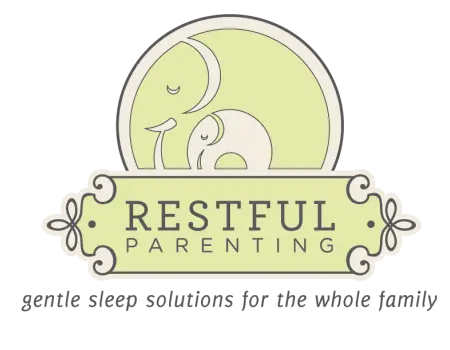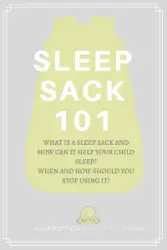Are you using a sleep sack for your baby? Sleep sacks can be a great tool to use as part of a bedtime routine.
What is a sleep sack?
If you are new to the idea of a sleep sack, they are essentially a sleeping bag for your baby- but a sleeping back they can’t crawl out of! Sleep sacks are akin to swaddling but for your older babies and toddlers on the move! Sleep sacks stay on the child even when they move a lot. Not only do sleep sacks provide comfort and warmth when blankets won’t stay on them, but it becomes one of the cues that signal time for sleep!
Sleep sacks come in many different sizes to accommodate various sizes and ages of babies and toddlers, from infant up to about age 3 (36 months). They can be handy for the toddler that likes to climb out of the crib, as it can be difficult to climb out with a sleep sack on (notice I said difficult- not impossible for the really determined!). Sleep sacks also come with or without sleeves, and come in lighter or heavier fabrics for summer and winter options.
Sleep sacks often have toddler proof zippers too, so if you have an escape artist or a budding diaper flinger, the sleep sack can help keep keep those moves at bay. But don’t be fooled- the determined toddler will find a way. You can try to stay a step ahead of them though by putting the sleep sack on backwards so the zipper is on their back side and unreachable.
As a side note, if you have a truly determined diaper flinger (aka: removing their usually dirty diaper and making a mess in their crib and surrounding area) you can use some duct tape to secure the velcro on the diaper front (making sure not to touch baby’s skin with the tape) or try a nighttime pull-up for toddlers (however a truly determined toddler can rip these too!)
When to give up the sleep sack?
- wait until they are a little older and try again;
- or if you feel like you would really like for them to be done with sleep sacks sooner than they are ready to be take them out of the sleep sack anyways and expect that they may have some rough nights or naps but they will adjust;
- or do it in baby steps. Try one night without it and if it doesn’t work out well, put the sleep sack back on for a couple of days and do another night or day without it. Sometimes it is easier to transition them for naps so you can try that out as well!
Meet Jennifer Taun
MSW, RSW – Partnering with Restful Parenting

We are excited to introduce Jennifer Taun, MSW, RSW, as a valued partner with Restful Parenting. Jennifer will be providing consultation and supervision support for our team, working closely with Elisa and Pam to ensure our clients receive comprehensive, effective, and compassionate care.




